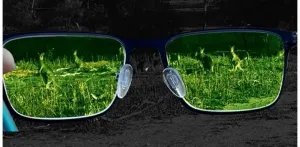(Press-News.org) In a new study, North Carolina State University researchers demonstrated they could print layers of electrically conductive ink on polyester fabric to make an e-textile that could be used in the design of future wearable devices.
Since the printing method can be completed at room temperature and in normal atmospheric conditions, researchers believe inkjet printing could offer a simpler and more effective method of manufacturing electronic textiles, also known as e-textiles. In addition, researchers said the findings suggest they could extend techniques common in the flexible electronic industry to textile manufacturing. They reported their findings in the journal ACS Applied Materials & Interfaces.
"Inkjet printing is a rapidly advancing new technology that's used in flexible electronics to make films used in cellphone displays and other devices," said the study's corresponding author Jesse S. Jur, professor of textile engineering, chemistry and science at NC State. "We think this printing method, which uses materials and processes that are common in both the electronics and textiles industries, also shows promise for making e-textiles for wearable devices."
In the study, researchers described how they used a FUJIFILM Dimatix inkjet printer to create a durable and flexible e-textile material, what they did to reliably create the e-textile, and its properties. Part of their challenge was to find the right composition of materials so the liquid ink would not seep through the porous surface of the textile materials and lose its ability to conduct electricity.
"Printing e-textiles has been a very big challenge for the e-textile industry," said the study's first author Inhwan Kim, a former graduate student at NC State. "We wanted to build a structure layer by layer, which has not been done on a textile layer with inkjet printing. It was a big struggle for us to find the right material composition."
They created the e-textile by printing layers of electrically conductive silver ink like a sandwich around layers of two liquid materials, which acted as insulators. They printed those sandwich layers on top of a woven polyester fabric. After they printed the layers of silver ink and insulating materials - made of urethane-acrylate, and poly(4-vinylphenol) - they monitored the surface of the material using a microscope. They found that the chemical properties of the insulating materials, as well as of the textile yarns, were important to maintaining the ability of the liquid silver ink to conduct electricity, and prevent it from penetrating through the porous fabric.
"We wanted a robust insulation layer in the middle, but we wanted to keep it as thin as possible to have the entire structure thin, and have the electric performance as high as possible," Kim said. "Also, if they are too bulky, people will not want to wear them."
The researchers evaluated the electrical performance of the e-textile after they bent the material multiple times. They tested more than 100 cycles of bending, finding the e-textile didn't lose its electrical performance. In future work, they want to improve the materials' electrical performance compared to e-textiles created using methods that require special facilities and atmospheric conditions, as well as increase the material's breathability.
Eventually, they want to use the printing method to create an e-textile that could be used in wearable electronics such as biomedical devices that could track heart rate, or used as a battery to store power for electronic devices.
"We were able to coat the ink on the fabric in a multi-layer material that's both durable and flexible," Kim said. "The beauty of this is, we did everything with an inkjet printer - we didn't use any lamination or other methodologies."
INFORMATION:
The study, "Microstructures in All-Inkjet Printed Textile Capacitors with Bilayer Interfaces of Polymer Dielectrics and Metal-Organic Decomposition Silver Electrodes" was published online in ACS Applied Materials & Interfaces. In addition to Jur and Kim, the other authors were Beomjun Ju, Ying Zhou and Braden Li. It was funded by VF Corporation. The authors also acknowledge Liquid X Printed Metals for the preparation of the reactive silver inks used in this study. The authors acknowledge the U.S. Department of Defense and the Air Force Research Laboratory for provision of the Science Mathematics and Research for Transformation (SMART) scholarship to Li. This work was supported by the National Science Foundation through Nanosystems Engineering Research Center for Advanced Self Powered Systems for Integrated Sensors and Technologies under Grant EEC 1160483.
Note to editors: The abstract follows.
"Microstructures in All-Inkjet Printed Textile Capacitors with Bilayer Interfaces of Polymer Dielectrics and Metal-Organic Decomposition Silver Electrodes"
Authors: Inhwan Kim, Beomjun Ju, Ying Zhou, Braden M. Li and Jesse S. Jur
Published online May 14, 2021, in ACS Applies Materials & Interfaces.
DOI: 10.1021/acsami.1c01827.
Abstract: Soft printed electronics exhibit unique structures and flexibilities suited for a plethora of wearable applications. However, forming scalable, reliable multi-layer electronic devices with heterogeneous materials interfaces on soft substrates, especially on porous and anisotropic structures, is highly challenging. In this study, we demonstrate an all-inkjet printed textile capacitor using a multi-layer structure of bilayer polymer dielectrics and particle-free metalorganic decomposition (MOD) silver electrodes. Understanding the inherent porous/anisotropic microstructure of textiles and their surface energy relationship was an important process step for successful planarization. The MOD silver ink formed a foundational conductive layer through uniform encapsulation of individual fibers without blocking fiber interstices. Urethane-acrylate and poly(4-vinylphenol)-based bilayer were able to form a planarized dielectric layer on polyethylene terephthalate (PET) textiles. A unique chemical interaction at the interfaces of bilayer dielectrics performed a significant role in insulating porous textile substrates resulting in high chemical and mechanical durability. In this work, we demonstrate how textiles' unique microstructures and bilayer dielectric layer designs benefit reliability and scalability in the inkjet process as well as the use in wearable electronics with electromechanical performance.
New research from Syracuse University Newhouse School of Public Communications reveals a relationship between political biases and attitudes about sexual assault.
Authored by assistant professor Rebecca Ortiz and PhD student Andrea Smith, the article "A social identity threat perspective on why partisans may engage in greater victim blaming and sexual assault myth acceptance in the #MeToo era," was published in the peer-reviewed journal Violence Against Women.
Ortiz and Smith found that the stronger the partisan identity of Republicans and Democrats, the more likely they were to engage in victim blaming attitudes, which was then related to a lesser likelihood to perceive the #MeToo ...
Reston, VA (Embargoed until 3:00 p.m. EDT, Tuesday, June 15, 2021)--A phase III clinical trial has validated the effectiveness of the prostate-specific membrane antigen (PSMA)-targeted radiotracer 18F-DCFPyL in detecting and localizing recurrent prostate cancer. Approved by the U.S. Food and Drug Administration last month, the radiotracer identified metastatic lesions with high positive predictive values regardless of anatomic region, adding to the evidence that PSMA-targeted radiotracers are the most sensitive and accurate agents for imaging prostate cancer. This study was presented at the ...
The demand for detecting infrared (IR) light, invisible to human eyes, is constantly growing, due to a wide variety of applications ranging from food quality control and remote sensing to night vision devices and lidar. Commercial IR cameras require the conversion of infrared light to electrons and the projection of the resultant image on a display. This display blocks the transmission of visible light, thereby disrupting normal vision. Moreover, such IR detectors require low temperature and even cryogenic cooling due to the low energies of the IR photons, making IR detectors bulky and heavy.
An all-optical alternative to traditional cameras is the use of a nonlinear optical process to convert IR light into visible. In this case, electrical signals are no ...
A new article analyzes Chile's transition in 1990 from dictatorship to democracy, the nature of democracy between 1990 and 2019, and the appearance of several social movements geared to expanding this democracy. The article, by researchers at Carnegie Mellon University (CMU), appears in The Latin Americanist, a publication of the Southeastern Council of Latin American Studies.
"Our goal is to locate the October 2019 protest movement in the context of Chile's very slow and incomplete transition to democracy, as well as amid social movements that have consistently challenged the economic ...
Dr. Igor Ivanishin, a postdoctoral researcher in the Harold Vance Department of Petroleum Engineering at Texas A&M University, has firsthand experience with the frustrations of oil production. He spent nine years as a hydraulic fracturing engineer with operating and service companies in Russia. A few years ago, he came to Texas A&M to get his doctoral degree while delving into a reoccurring recovery problem in carbonate reservoirs: why don't they produce oil as predicted?
Ivanishin is investigating variations in the chemical composition of dolomite and calcite ...
CHAPEL HILL, NC - A group of scientists led by researchers at the University of North Carolina at Chapel Hill, Weill Cornell Medicine and NewYork-Presbyterian reported that the Moderna mRNA vaccine and a protein-based vaccine candidate elicited durable neutralizing antibody responses to SARS-CoV-2 in pre-clinical research. There were no adverse effects.
The research, published June 15 in Science Immunology, suggests that vaccines for young children are likely important, safe tools to curtail the pandemic.
The co-senior authors of the paper are Kristina De Paris, PhD, professor of microbiology and immunology at the UNC School ...
Instead of looking at the reasons child welfare caseworkers leave their jobs, Oregon State University researchers examined the common factors among workers who stay in the field, and what makes them feel most satisfied in their work.
In their recent study, researchers found that quality supervisory support and strong relationships with coworkers helped caseworkers feel appreciated and understood, while having adequate technology and equipment helped them manage their workload effectively
They hope child welfare agencies can use this information to support ...
BIRMINGHAM, Ala. - Clinical evaluation of three COVID-19 vaccine candidates in 2020-21 during a worldwide pandemic that killed or sickened millions was unprecedented in terms of urgency and scope. Responsibility for the safety, integrity and scientific validity of the trials in the United States fell to 12 experts of the federally appointed COVID-19 Vaccine Data and Safety Monitoring Board, or COVID-19 DSMB, who in turn report to an oversight group.
This COVID-19 DSMB team -- which included co-contributing author Richard Whitley, M.D., distinguished professor of pediatrics in the University of Alabama ...
For the first time, researchers have used precariously-balanced rocks to set the formal design earthquake motions for a major existing engineered structure--the Clyde Dam, the largest concrete dam in New Zealand.
Mark Stirling of the University of Otago and colleagues identified and assessed the ages of these gravity-defying rock formations located about 2 kilometers from the dam site, using these data to determine the peak ground accelerations that the rocks could withstand before toppling.
This in turn was used to set the Safety Evaluation Earthquake (SEE) spectrum for the dam, or ...
An underwater archaeologist from The University of Texas at Arlington is part of a research team studying 9,000-year-old stone tool artifacts discovered in Lake Huron that originated from an obsidian quarry more than 2,000 miles away in central Oregon.
The obsidian flakes from the underwater archaeological site represent the oldest and farthest east confirmed specimens of western obsidian ever found in the continental United States.
"In this case, these tiny obsidian artifacts reveal social connections across North America 9,000 years ago," said Ashley Lemke, assistant professor of sociology and anthropology at UT Arlington. "The artifacts found below the Great Lakes come from a geological source in Oregon, 4,000 kilometers away---making it one of the longest distances ...




